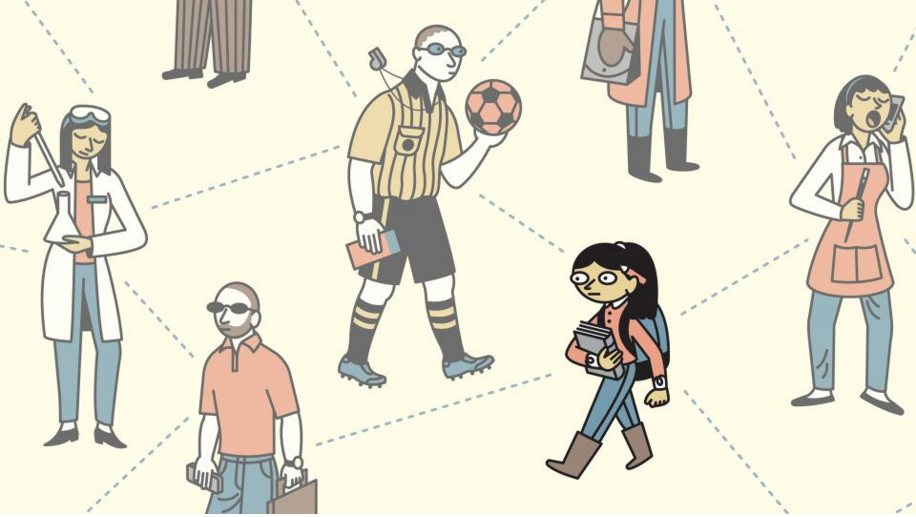Large new study highlights inequality in access to important adults.
Hagler, M. A., & Poon, C. Y. S. (2023). Contextual antecedents and well-being indicators associated with children’s and adolescents’ access to supportive nonparent adults. Journal of Community Psychology. https://doi.org/10.1002/jcop.23016
Summarized by Ariel Ervin
Notes of Interest:
- Evidence indicates that having supportive non-parent adults (SNPAs) correlates with a myriad of positive youth outcomes.
- Research shows that longer-lasting and more intensive relationships are more likely to become mentoring relationships, which can have a long-term impact on young people’s education, economic success, and psychosocial development.
- Although relationships between young people and SNPAs are salient, they are not equally dispersed (i.e., young people with more social privileges have an easier time accessing SNPAs). This unequal distribution is concerning since SNPAs can boost a young person’s social capital.
- Unfortunately, many national studies on this subject used old data sets and only had adolescent participants.
- This study utilized a recent dataset to examine contextual antecedents and indicators of well-being associated with SNPAs among children and adolescents.
- A dearth of SNPAs correlated with social disadvantage for children and adolescents.
- Parent education and income didn’t notably predict the presence of SNPAs when analyzed with other contextual and demographic predictors. This finding indicates that class-related differences can stem from familial traits, associated neighborhoods, race, immigration, etc.
- Living in a supportive and safe neighborhood correlated with a higher chance of acquiring SNPAs.
- Neighborhoods with amenities, such as community centers and parks, contributed to this since shared spaces can create chances for young people to connect with supportive adults.
- Young people who were children of immigrants or who were racially underrepresented were less likely to have SNPAs.
- Extracurricular activities (more specifically, volunteering [children and adolescents] and paid work [adolescents]) boosted young people’s chances of having an SNPA.
- Parents’ engagement in their children’s activities and familial resilience were more stable predictors of SNPAs among children than adolescents.
- Having SNPAs correlated with ease in making friends. It was also associated with parents’ perception that their children are interested and invested in learning.
- Adolescents who had better overall health correlate with the presence of SNPAs.
- Efforts to rejuvenate and integrate communities (e.g., neighborhood capacity-building and mixed-income housing) have the potential to open more doors to developing more intergenerational community connections.
- These findings have implications for how the mentoring gap can be closed.
Introduction (Reprinted from the Abstract)
The aim of this study was to examine contextual antecedents and well-being indicators associated with children’s and adolescents’ access to supportive nonparent adults (SNPAs). We conducted secondary data analysis of the 2016 National Survey of Children’s Health, a large-scale caregiver-reported survey. We analyzed separate subsamples of children (ages 6–11, n = 12,849) and adolescents (ages 12–17, n = 17,628). For both children and adolescents, markers of social advantage (e.g., White race, nonimmigrant families, neighborhood/community capital, access to extracurriculars) increased the likelihood of having SNPAs, according to parent or caregiver reports. Familial factors (e.g., parent participation in school and extracurricular activities) were stronger predictors of SNPA presence for children. Access to SNPAs was negatively associated with social difficulties among children and adolescents and positively associated with curiosity and overall health among adolescents. In conclusion, disadvantage across multiple ecological levels impairs children’s and adolescents’ access to SNPAs. Having an SNPA may be associated with some aspects of youth well-being, although causality cannot be inferred in cross-sectional data.
Implications (Reprinted from the Discussion)
The current study investigated contextual antecedents and indicators of well-being associated with children’s and adolescents’ access to SNPAs using a recent, large, nationally representative, caregiver-reported dataset. Across several indicators, youth from advantaged backgrounds were more likely than disadvantaged peers to have access to SNPAs. Predictors were largely consistent for school-age children and adolescents, except that familial and parental factors appeared to be more influential for children. When a range of demographic and contextual factors was stringently controlled in PSM analyses, access to SNPAs was associated with some markers of youth well-being.
Supporting our first hypothesis, lack of access to SNPAs was associated with social disadvantage for both children and adolescents. These findings replicate and expand on prior national studies, which documented social class-based differences in the prevalence of nonparent adult relationships (Gowdy et al., 2021, 2022; Raposa et al., 2018). While most previous studies focused on broad markers of social status (e.g., income, parental education, race), our study examined a wider range of indicators of social disadvantage, including characteristics of youth’s significant developmental settings (i.e., microsystems), such as families and communities, and interactions between these settings (i.e., mesosystems) (Bronfenbrenner, 1979). Interestingly, neither income nor parent education significantly predicted SNPA presence when examined with other demographic and contextual predictors, suggesting that socioeconomic class-based differences might be explained by correlated neighborhood and familial characteristics, as well as other identity statuses like immigration and race.
To access this article, click here.










